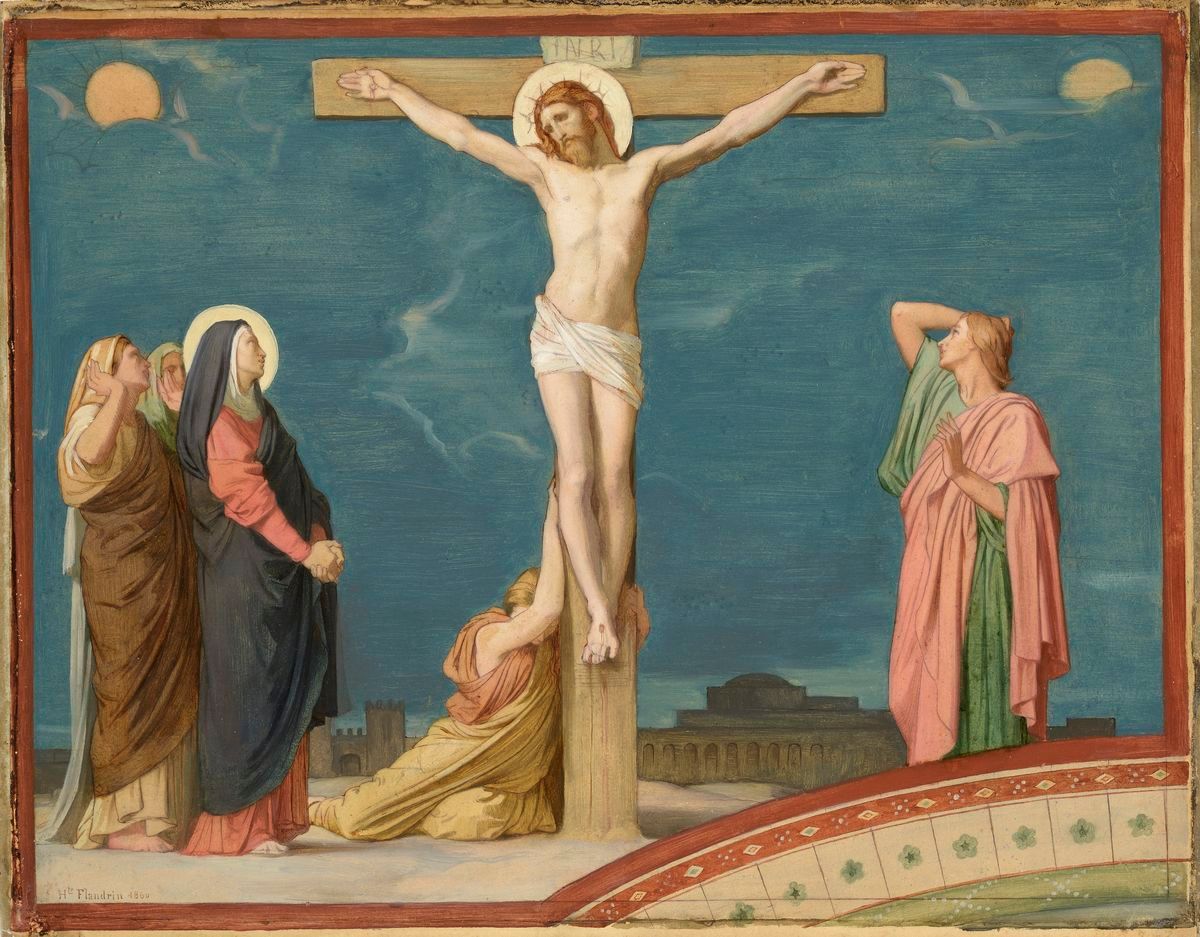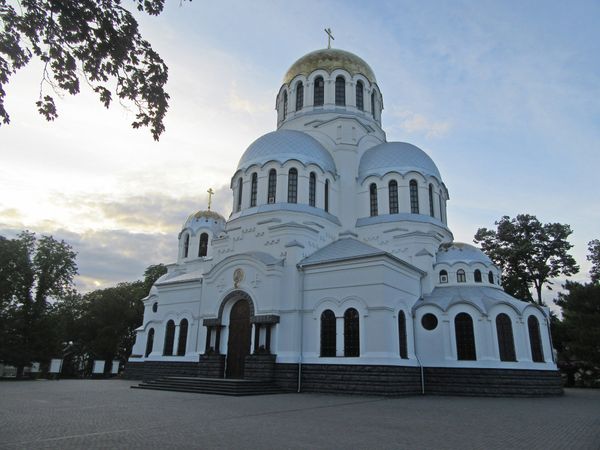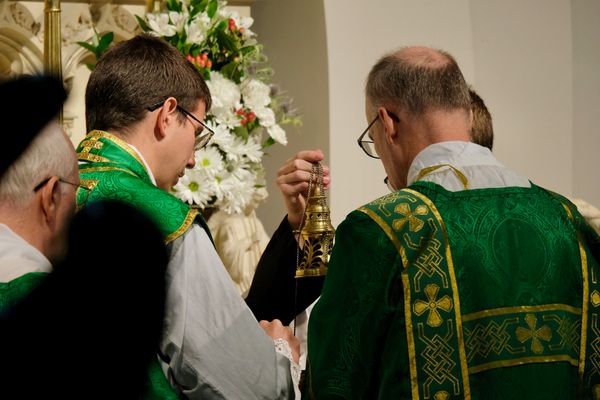Table of Contents
Introduction
This is a chronological list of periods in Christian art history with image examples. An art period is a phase in the development of the work of an artist, groups of artists or art movement.
- Medieval c. 260-1400 (The medieval art of the Western world covers a vast scope of time and place, over 1000 years of art in Europe, and at certain periods in Western Asia and Northern Africa.)
- Byzantine c. 313-present (Byzantine art originated and evolved from the Christianized Greek culture of the Eastern Roman Empire; content from both Christianity and classical Greek mythology were artistically expressed through Hellenistic modes of style and iconography.)
- Renaissance c. 1300-1602 (The Renaissance marked the transition from the Middle Ages to modernity. It occurred after the Crisis of the Late Middle Ages and was associated with great social change.)
- Baroque c. 1600-1730 (The Baroque style used contrast, movement, exuberant detail, deep color, grandeur and surprise to achieve a sense of awe.)
- Rococo c. 1720-1780 (Rococo, less commonly Roccoco or Late Baroque, is an exceptionally ornamental and theatrical style of architecture, art and decoration)
- Romanticism c. 1780-1850 (Romanticism was characterized by its emphasis on emotion and individualism as well as glorification of all the past and nature, preferring the medieval rather than the classical.)
- Modern c. 1850-1945 (Modern art is associated with art in which the traditions of the past have been thrown aside in a spirit of experimentation.)
- Contemporary c. 1946-present (Contemporary art is a dynamic combination of materials, methods, concepts, and subjects that continue the challenging of boundaries that was already well underway in the 20th century.)
Medieval Art
c. 260-1400
The medieval art of the Western world covers a vast scope of time and place, over 1000 years of art in Europe, and at certain periods in Western Asia and Northern Africa. It includes major art movements and periods, national and regional art, genres, revivals, the artists' crafts, and the artists themselves.
Medieval art was produced in many media, and works survive in large numbers in sculpture, illuminated manuscripts, stained glass, metalwork and mosaics, all of which have had a higher survival rate than other media such as fresco wall-paintings, work in precious metals or textiles, including tapestry. Especially in the early part of the period, works in the so-called "minor arts" or decorative arts, such as metalwork, ivory carving, enamel and embroidery using precious metals, were probably more highly valued than paintings or monumental sculpture.
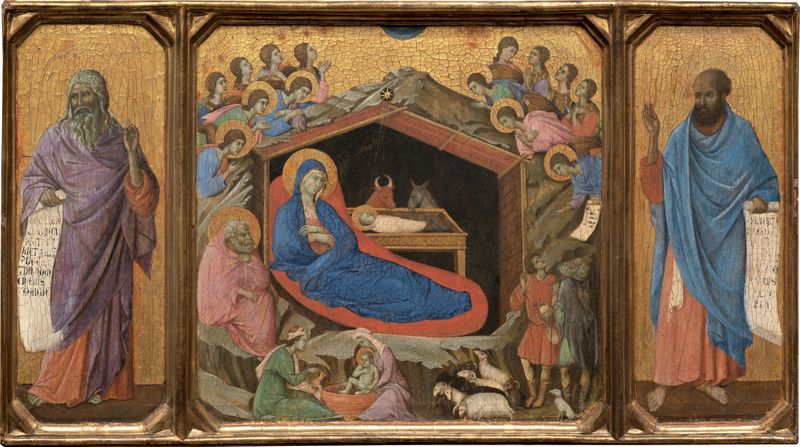
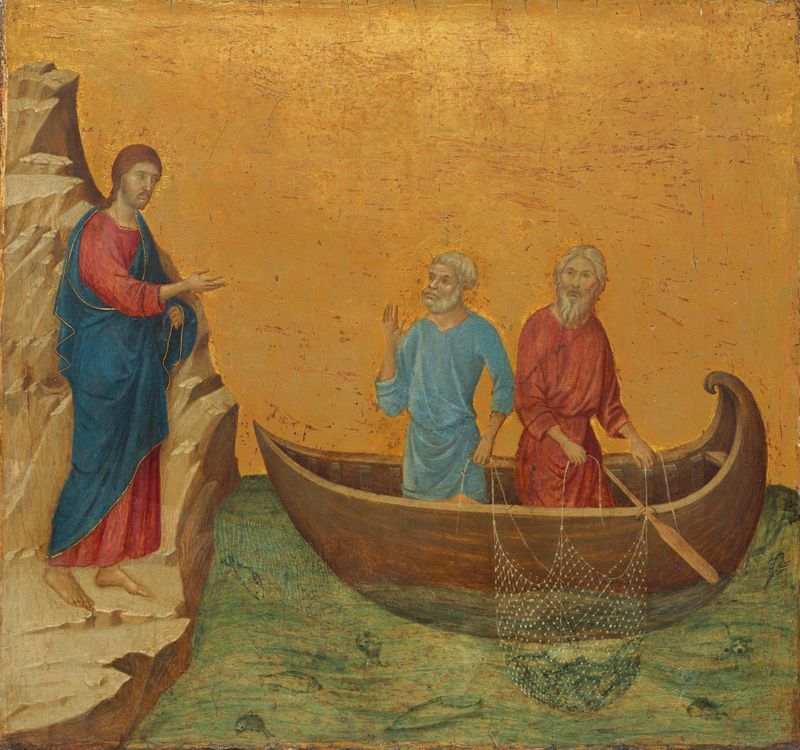
Byzantine
c. 313-present
Byzantine art originated and evolved from the Christianized Greek culture of the Eastern Roman Empire; content from both Christianity and classical Greek mythology were artistically expressed through Hellenistic modes of style and iconography. The art of Byzantium never lost sight of its classical heritage; the Byzantine capital, Constantinople, was adorned with a large number of classical sculptures, although they eventually became an object of some puzzlement for its inhabitants (however, Byzantine beholders showed no signs of puzzlement towards other forms of classical media such as wall paintings). The basis of Byzantine art is a fundamental artistic attitude held by the Byzantine Greeks who, like their ancient Greek predecessors, "were never satisfied with a play of forms alone, but stimulated by an innate rationalism, endowed forms with life by associating them with a meaningful content." Although the art produced in the Byzantine Empire was marked by periodic revivals of a classical aesthetic, it was above all marked by the development of a new aesthetic defined by its salient "abstract", or anti-naturalistic character. If classical art was marked by the attempt to create representations that mimicked reality as closely as possible, Byzantine art seems to have abandoned this attempt in favor of a more symbolic approach.
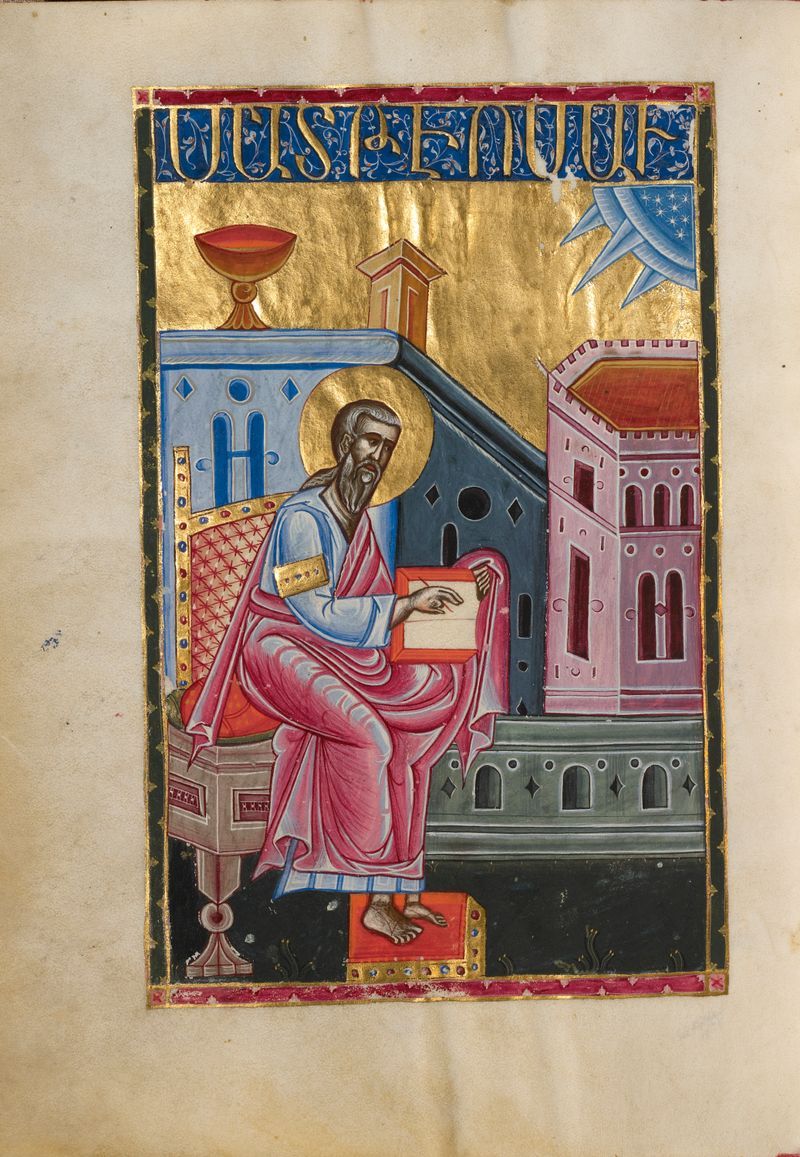
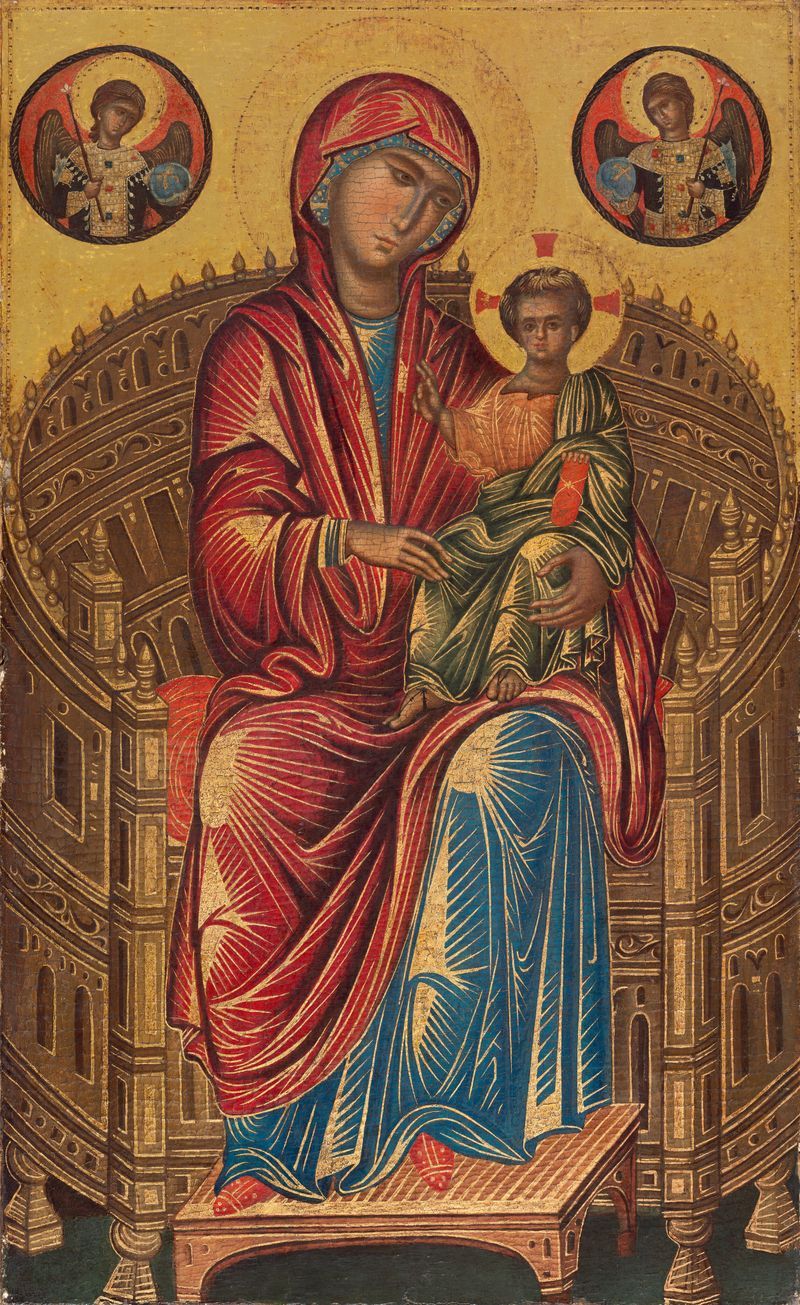
Renaissance
c. 1300-1602
The Renaissance was a period in European history marking the transition from the Middle Ages to modernity and covering the 15th and 16th centuries. It occurred after the Crisis of the Late Middle Ages and was associated with great social change.
The intellectual basis of the Renaissance was its version of humanism, derived from the concept of Roman humanitas and the rediscovery of classical Greek philosophy, such as that of Protagoras, who said that "man is the measure of all things". This new thinking became manifest in art, architecture, politics, science and literature. Early examples were the development of perspective in oil painting and the revived knowledge of how to make concrete. Although the invention of metal movable type sped the dissemination of ideas from the later 15th century, the changes of the Renaissance were not uniform across Europe: the first traces appear in Italy as early as the late 13th century, in particular with the writings of Dante and the paintings of Giotto.
As a cultural movement, the Renaissance encompassed innovative flowering of Latin and vernacular literatures, beginning with the 14th-century resurgence of learning based on classical sources, the development of linear perspective and other techniques of rendering a more natural reality in painting; and gradual but widespread educational reform. It is perhaps best known for its artistic developments and the contributions of such polymaths as Leonardo da Vinci and Michelangelo, who inspired the term "Renaissance man".
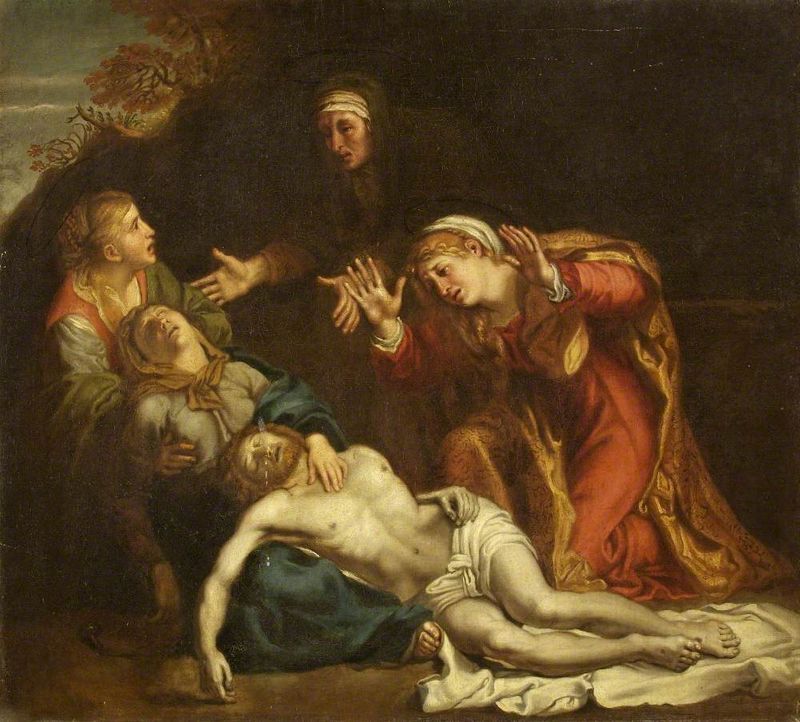
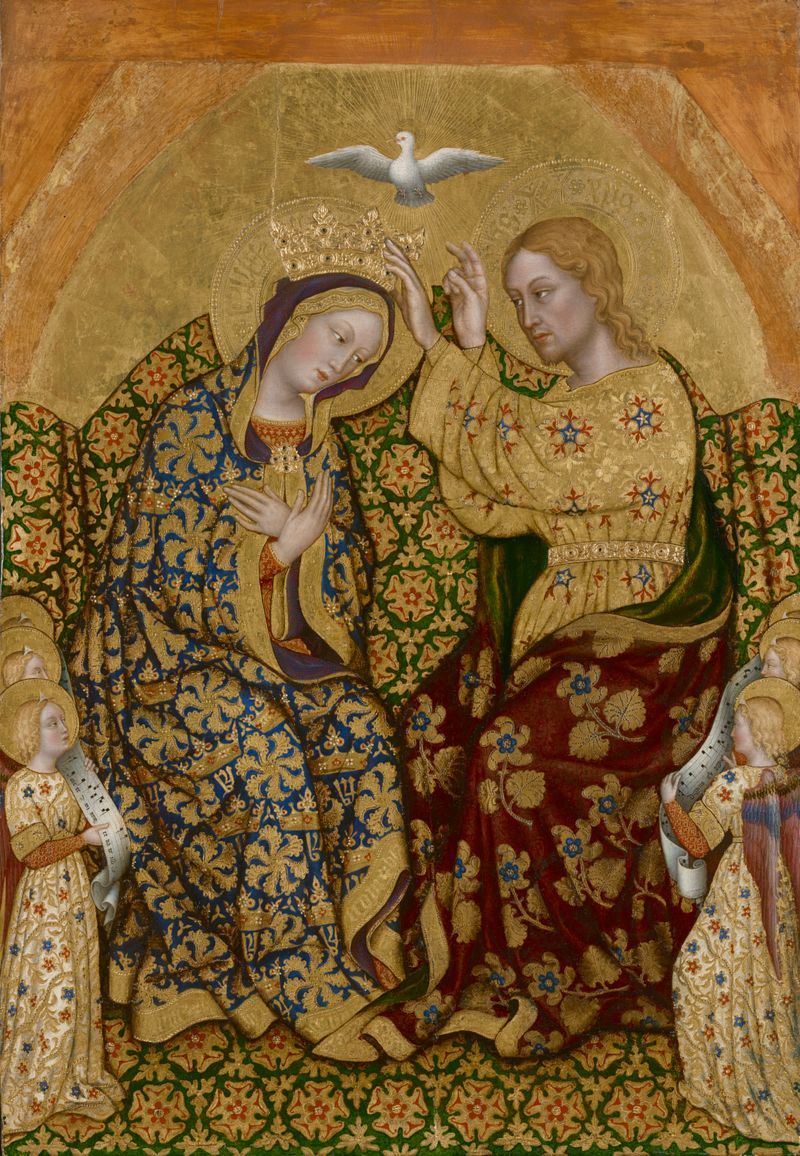
Baroque
c. 1600-1730
The Baroque is a style of architecture, music, dance, painting, sculpture and other arts that flourished in Europe from the early 17th century until the 1740s. In the territories of the Spanish and Portuguese empires including the Iberian Peninsula it continued, together with new styles, until the first decade of the 1800s. It followed Renaissance art and Mannerism and preceded the Rococo (in the past often referred to as "late Baroque") and Neoclassical styles. It was encouraged by the Catholic Church as a means to counter the simplicity and austerity of Protestant architecture, art and music, though Lutheran Baroque art developed in parts of Europe as well.
The Baroque style used contrast, movement, exuberant detail, deep color, grandeur and surprise to achieve a sense of awe. The style began at the start of the 17th century in Rome, then spread rapidly to France, northern Italy, Spain and Portugal, then to Austria, southern Germany and Russia. New motifs introduced by Baroque are: the cartouche, trophies and weapons, baskets of fruit or flowers, and others, made in marquetry, stucco, or carved.
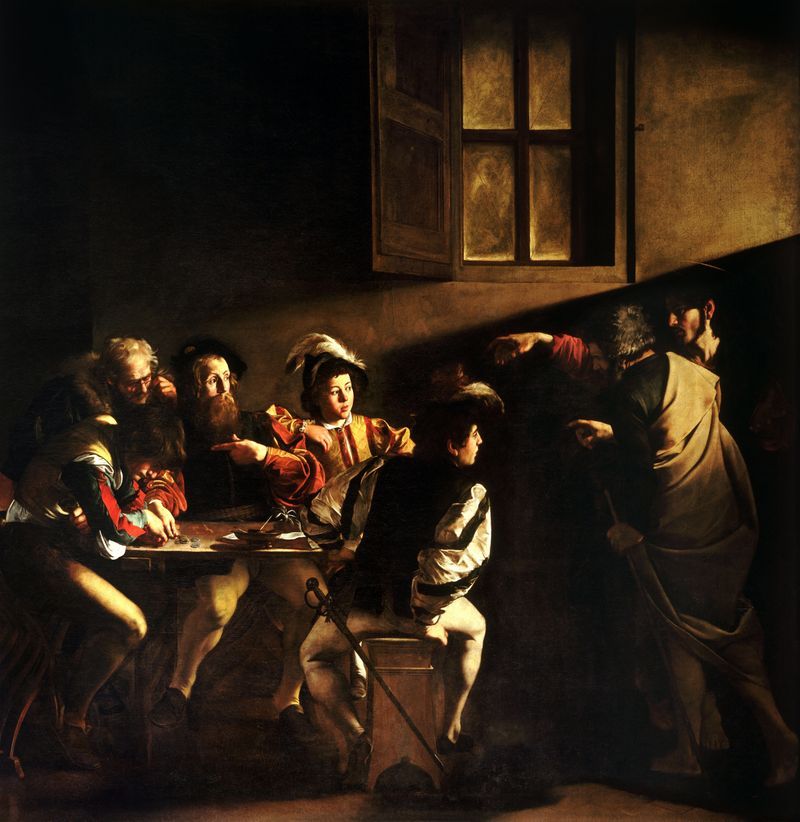
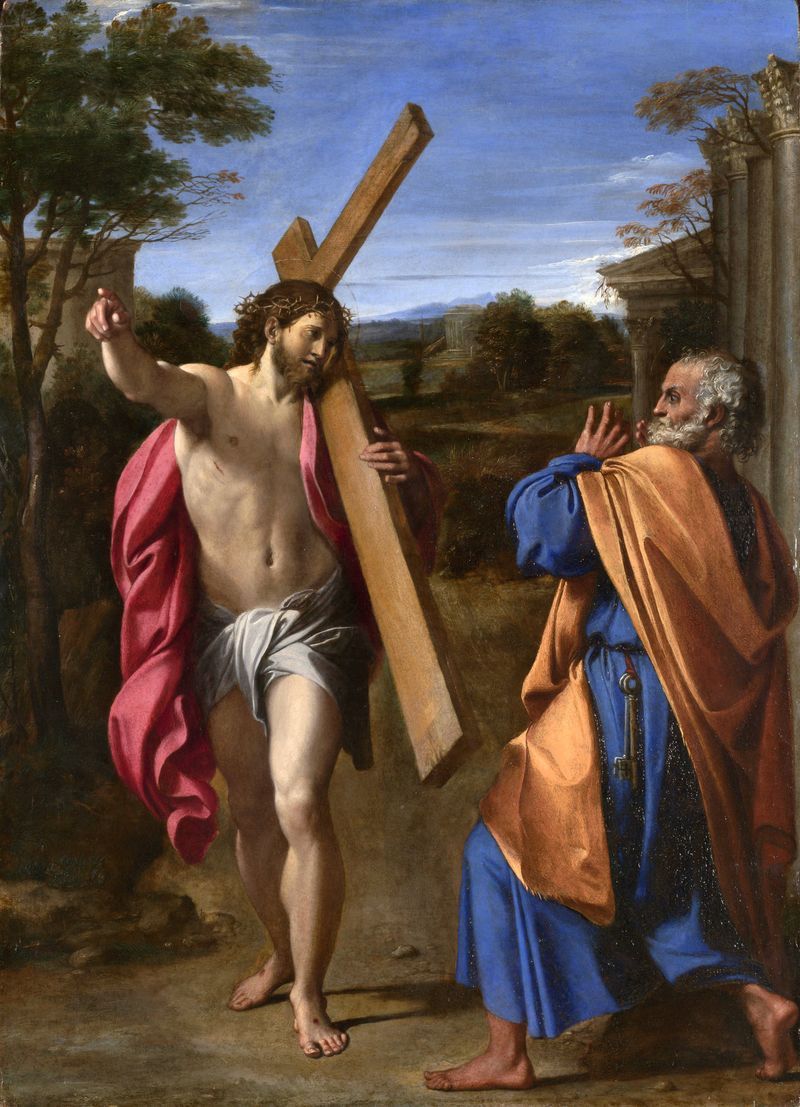
Rococo
c. 1720-1780
Rococo, less commonly Roccoco or Late Baroque, is an exceptionally ornamental and theatrical style of architecture, art and decoration which combines asymmetry, scrolling curves, gilding, white and pastel colors, sculpted molding, and trompe-l'œil frescoes to create surprise and the illusion of motion and drama. It is often described as the final expression of the Baroque movement.
The Rococo style began in France in the 1730s as a reaction against the more formal and geometric Style Louis XIV. It was known as the style rocaille, or rocaille style. It soon spread to other parts of Europe, particularly northern Italy, Austria, southern Germany, Central Europe and Russia. It also came to influence the other arts, particularly sculpture, furniture, silverware and glassware, painting, music, and theatre. Although originally a secular style primarily used for interiors of private residences the Rococo had a spiritual aspect to it which led to its widespread use in church interiors, particularly in Central Europe, Portugal, and South America.
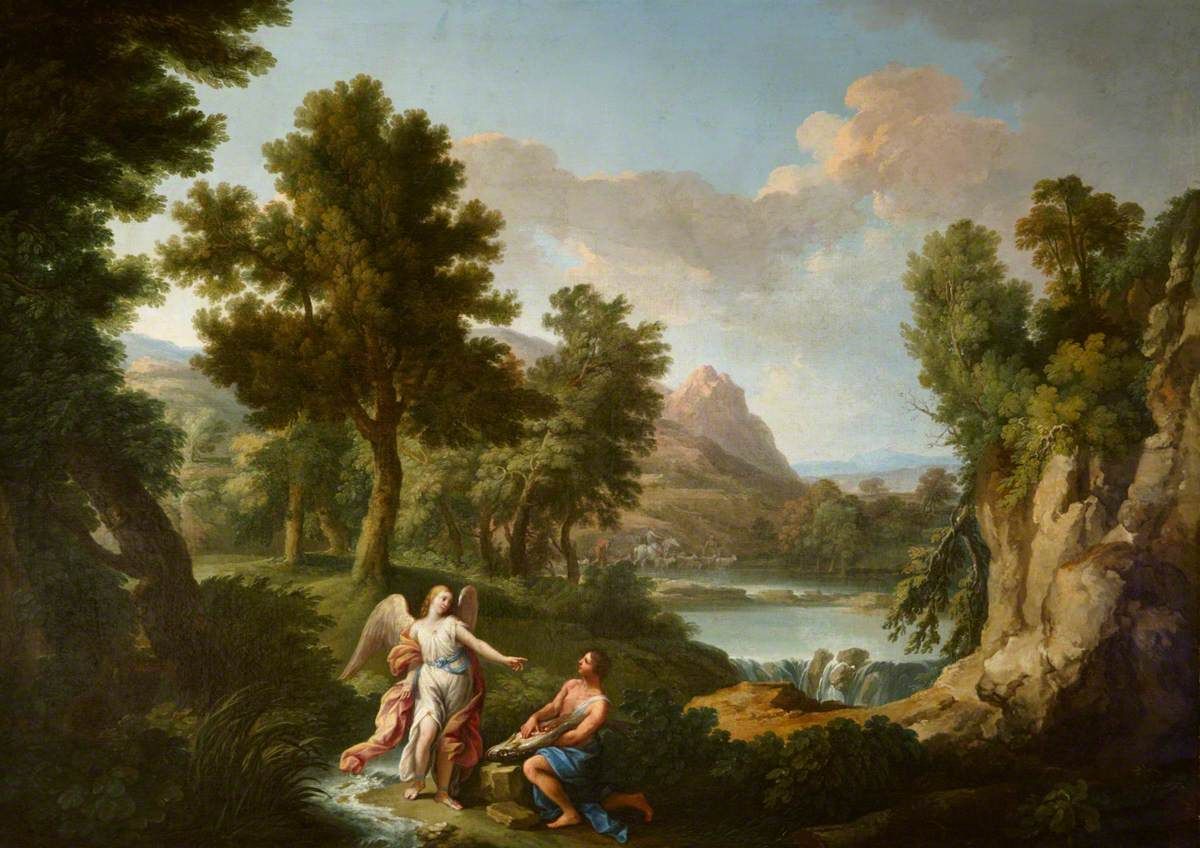
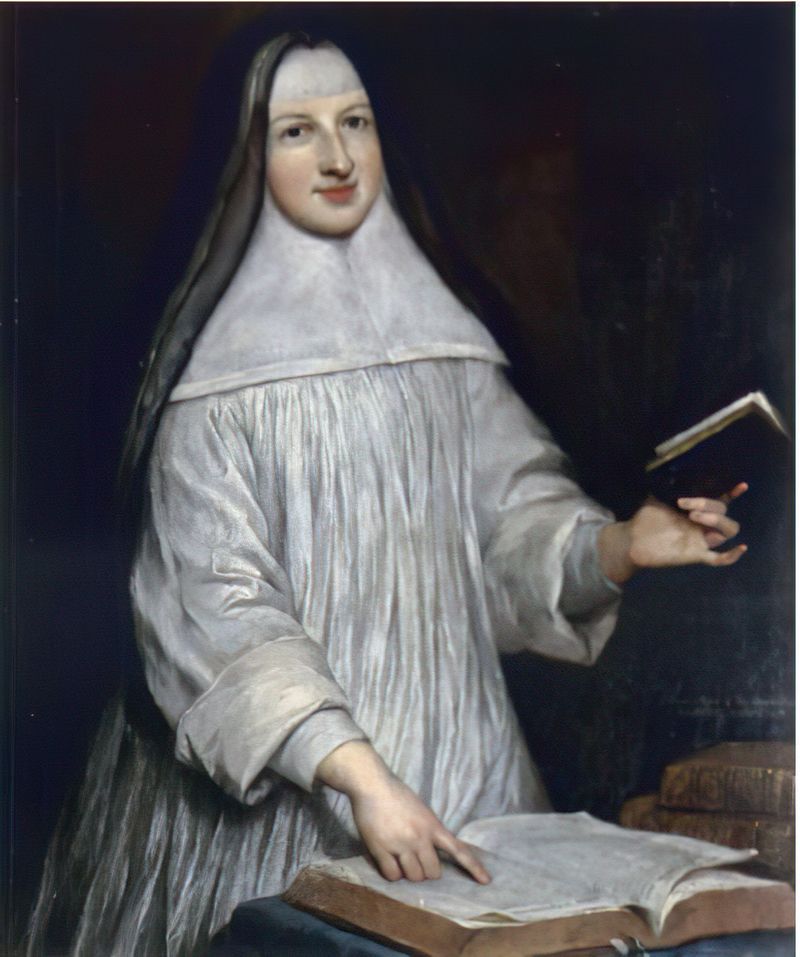
Romanticism
c. 1780-1850
Romanticism (also known as the Romantic era) was an artistic, literary, musical, and intellectual movement that originated in Europe towards the end of the 18th century, and in most areas was at its peak in the approximate period from 1800 to 1850. Romanticism was characterized by its emphasis on emotion and individualism as well as glorification of all the past and nature, preferring the medieval rather than the classical. It was partly a reaction to the Industrial Revolution, the aristocratic social and political norms of the Age of Enlightenment, and the scientific rationalization of nature—all components of modernity. It was embodied most strongly in the visual arts, music, and literature, but had a major impact on historiography, education, chess, social sciences, and the natural sciences. It had a significant and complex effect on politics, with romantic thinkers influencing liberalism, radicalism, conservatism, and nationalism.
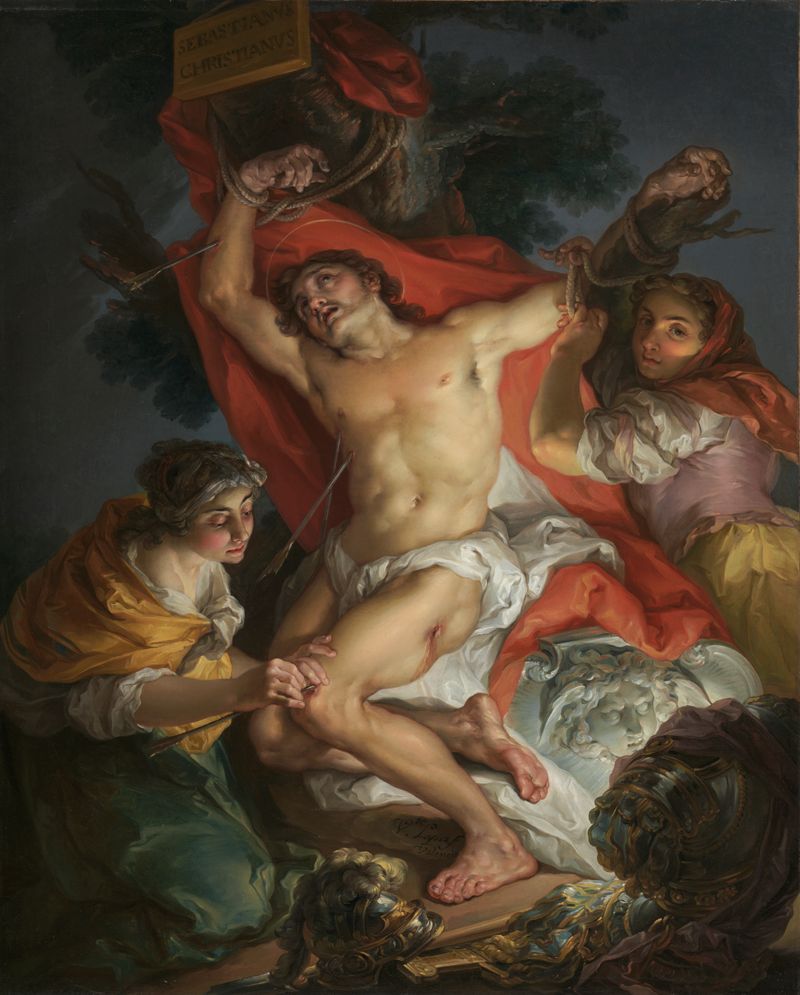
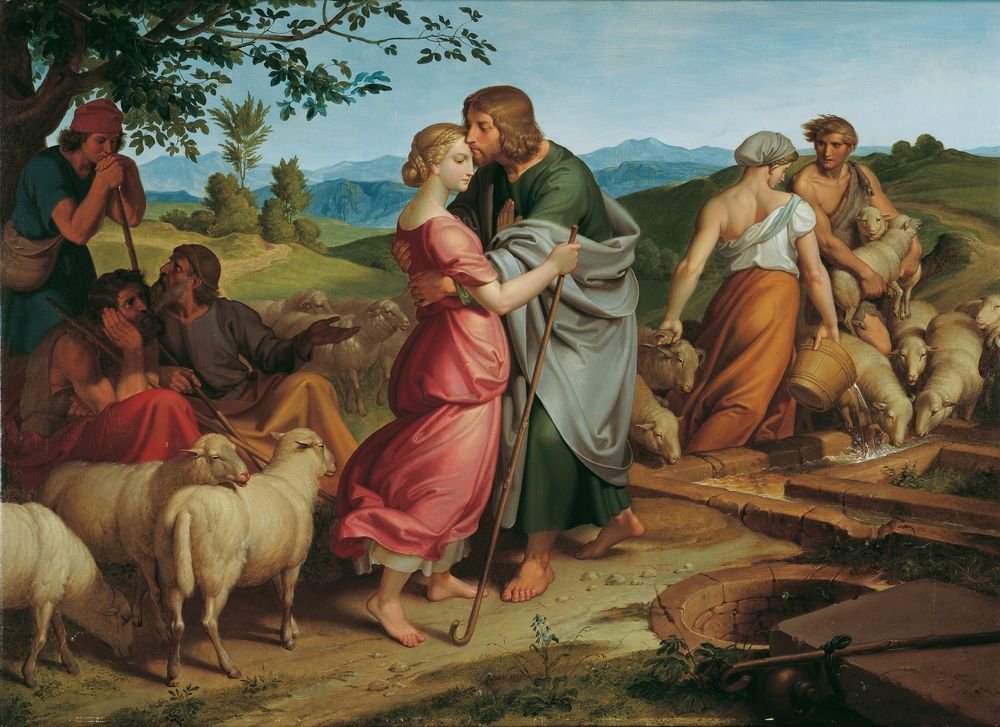
The two following periods of art will be covered for sake of posterity, however the SDCason Gallery does not promote modern or contemporary art for two main reasons:
- Art that was created less than one-hundred years ago is not in the public domain, and therefore not free to use.
- Many modern and contemporary art pieces go directly against traditions and challenge boundaries. Therefore, these pieces cannot be considered objectively beautiful, but have artistic quality based on subjective notions.
As this gallery's purpose is to share objectively beautiful Catholic art that is also free to use, these art pieces would not be suitable for the website. Although there are many wonderful artists who currently make wonderful Catholic art, most of them retain complete copyright (which is their right). These new artworks also cannot be shared here, because they are copyrighted and not free to use.
Modern
c. 1850-1945
Modern art includes artistic work produced during the period extending roughly from the 1860s to the 1970s, and denotes the styles and philosophies of the art produced during that era. The term is usually associated with art in which the traditions of the past have been thrown aside in a spirit of experimentation. Modern artists experimented with new ways of seeing and with fresh ideas about the nature of materials and functions of art. A tendency away from the narrative, which was characteristic for the traditional arts, toward abstraction is characteristic of much modern art. More recent artistic production is often called contemporary art or postmodern art.
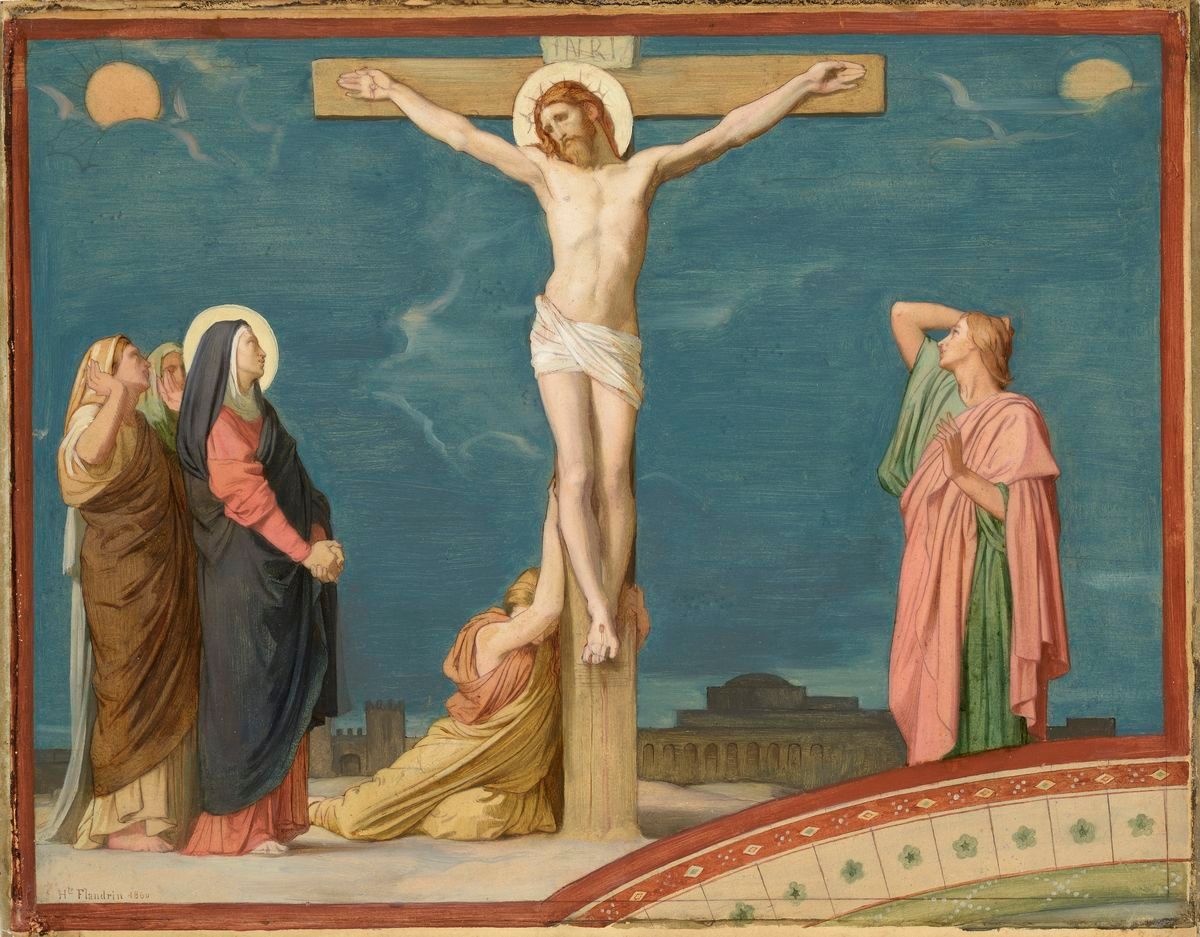
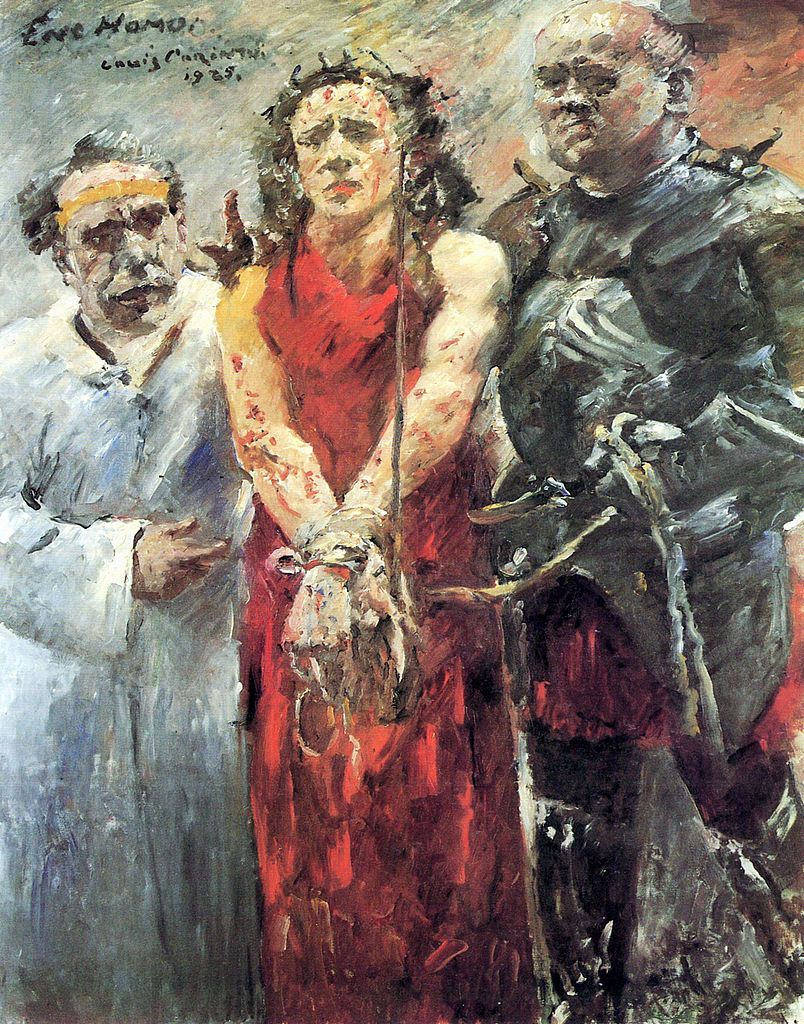
Contemporary
c. 1946-present
Contemporary art is the art of today, produced in the second half of the 20th century or in the 21st century. Contemporary artists work in a globally influenced, culturally diverse, and technologically advancing world. Their art is a dynamic combination of materials, methods, concepts, and subjects that continue the challenging of boundaries that was already well underway in the 20th century. Diverse and eclectic, contemporary art as a whole is distinguished by the very lack of a uniform, organizing principle, ideology, or "-ism". Contemporary art is part of a cultural dialogue that concerns larger contextual frameworks such as personal and cultural identity, family, community, and nationality.
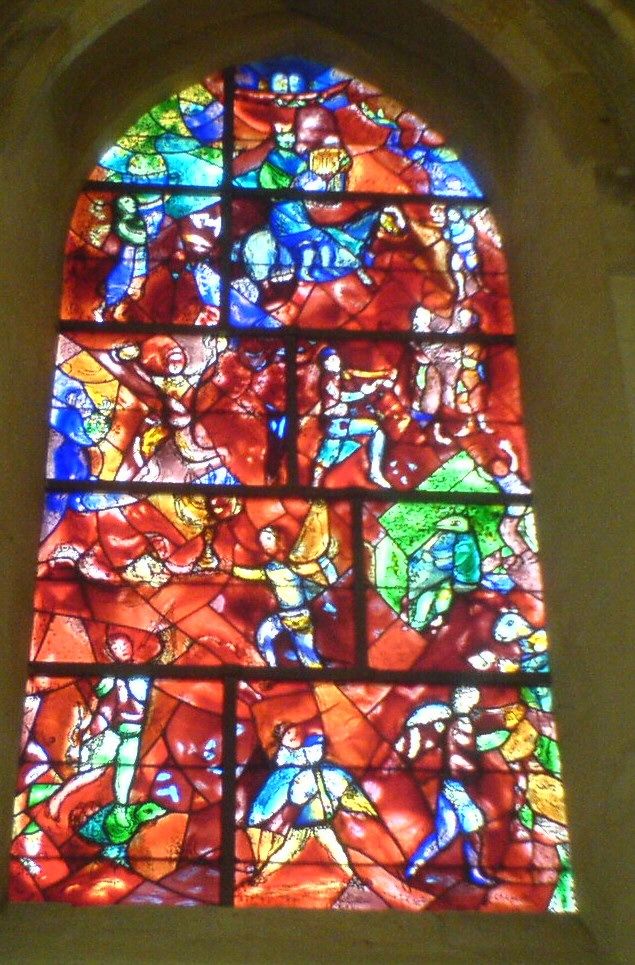
This site is a place where public domain paintings, stock photos, and coloring pages are stored, categorized, and made searchable. Anyone can come here and use the category page in the menu or the search bar to find the perfect Catholic image for their project. Did I mention that all the images are free and creative commons? That means that you won't have to worry about copyright issues or stock photo fees.
If you'd like to keep this site free, all you have to do is give a one-time donation or subscribe monthly.

